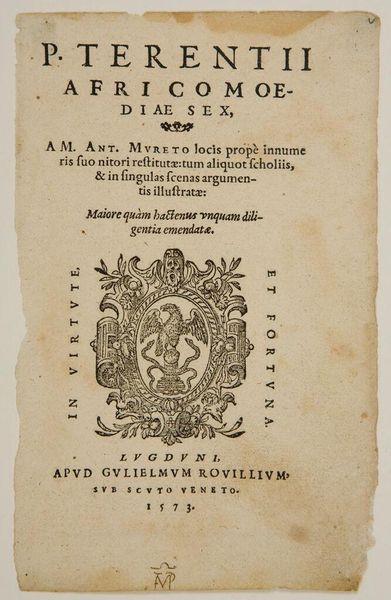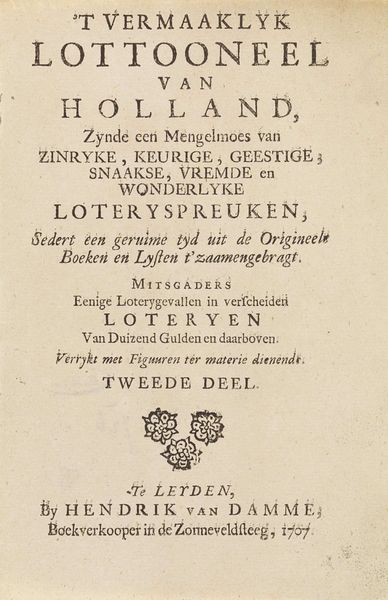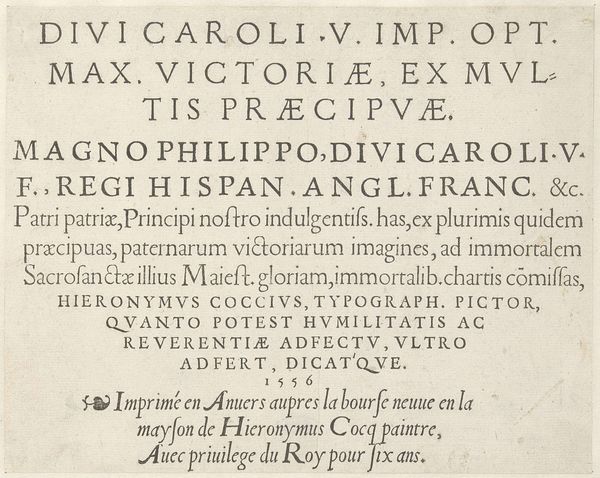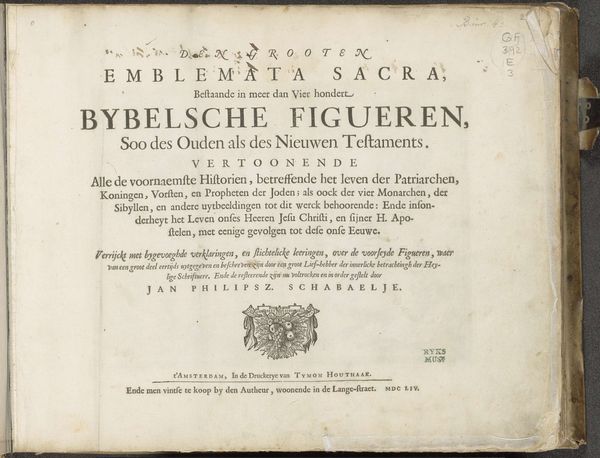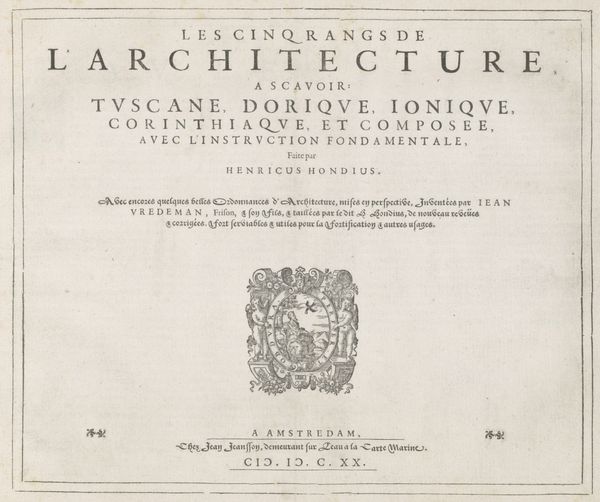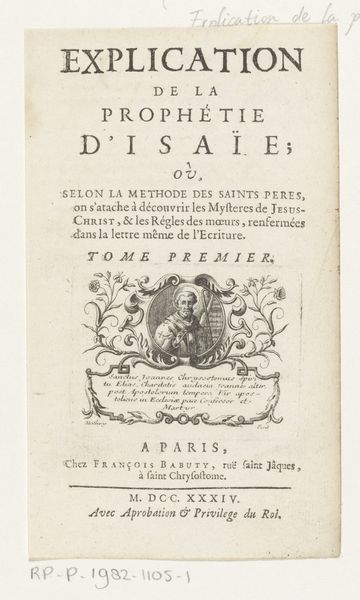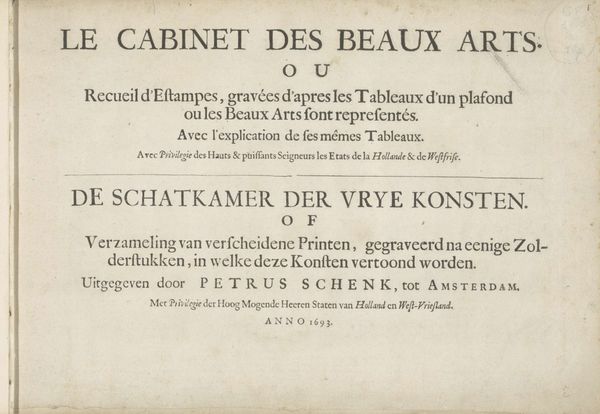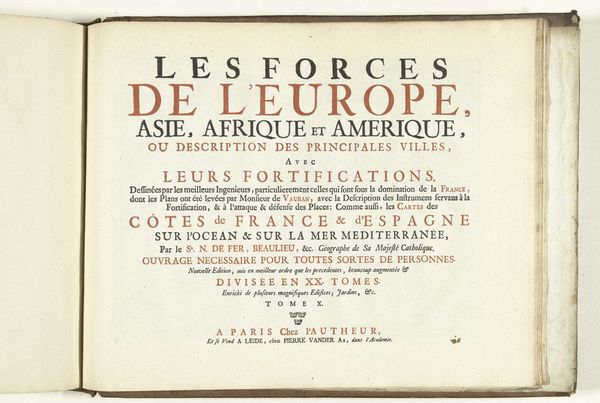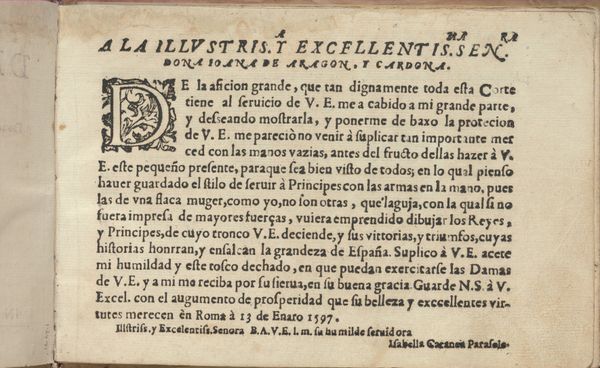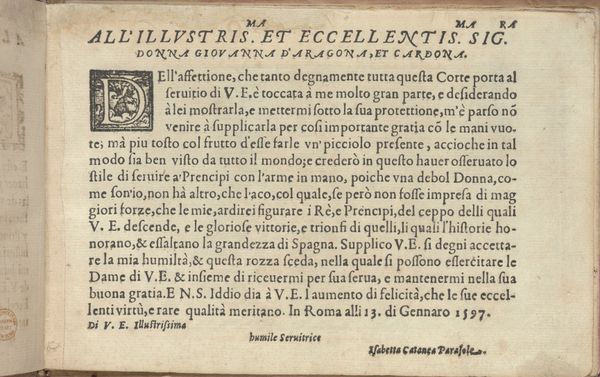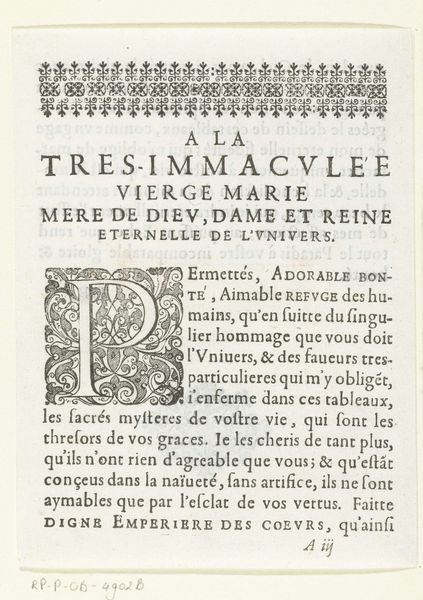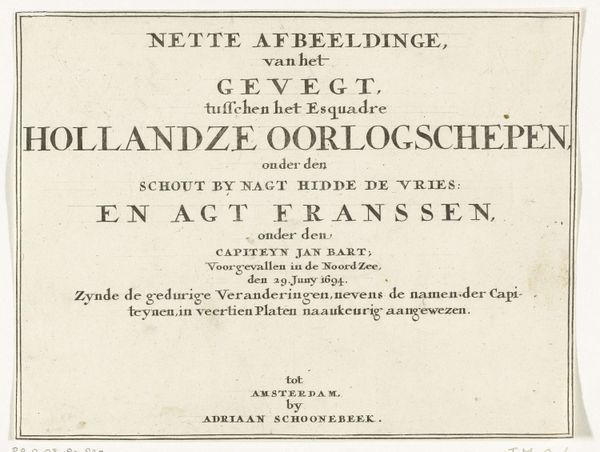
graphic-art, print, engraving
#
graphic-art
#
baroque
# print
#
book
#
text
#
engraving
Dimensions: height 214 mm, width 261 mm
Copyright: Rijks Museum: Open Domain
Editor: Here we have the title page for *Les Travaux d'Ulysse,* or *The Labors of Ulysses,* from 1633, engraved by Theodoor van Thulden. It’s…well, it’s a page full of ornate text! How should we even begin to interpret it? Curator: This title page is so much more than just an introduction to a book; it’s a carefully constructed piece of propaganda. Who was Ulysses, and what did he represent in the 17th century? Think about the political and social anxieties of the time. Editor: Okay, so Ulysses as a symbol…He was a hero, a wanderer, known for his cunning. Maybe they were trying to align the book's patron with those qualities? Curator: Precisely. The dedication "A Monseigneur de Liancourt" tells us this book was likely intended to curry favor. But look closer. What does the phrasing "de la façon qu'ils se voyent dans la maison royalle de Fontainebleau" imply about the book's contents and intended audience? Editor: It’s saying that these works were made in the style or fashion seen in the royal house of Fontainebleau. It's like it's flaunting its connection to the royal court, emphasizing power and prestige. It sounds like access to this aesthetic was very exclusive. Curator: Exactly! Consider the implications. By associating Ulysses with the French monarchy and making it visual, what kind of power dynamics are being reinforced? Who is being included, and perhaps more importantly, who is being excluded from this narrative of heroism and royal patronage? How might this seemingly simple title page perpetuate certain social hierarchies? Editor: It makes you wonder what kind of narratives are really being pushed and whose voices were deliberately left out in the historical telling of stories. That’s certainly much more layered than I thought! Curator: And that is where true understanding begins - when we start questioning who gets to write the story.
Comments
No comments
Be the first to comment and join the conversation on the ultimate creative platform.
